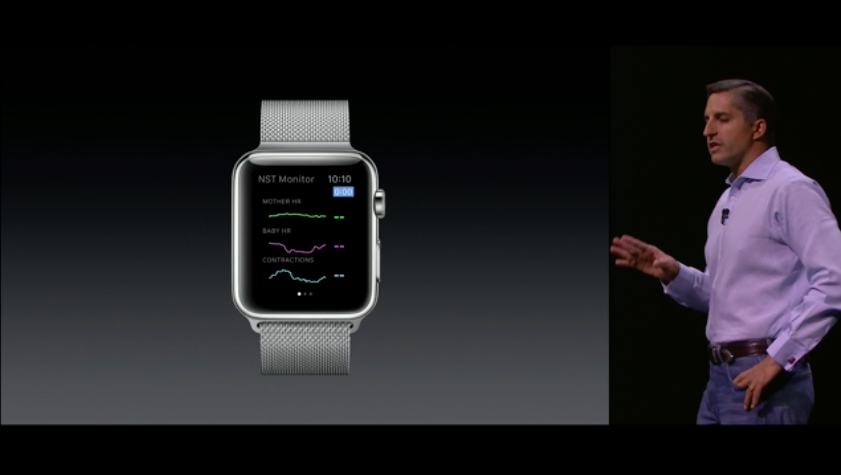
AirStrip For Apple Watch Is A Double-Edged Sword
Laura June Topolsky, Motherboard
For now, just a few private companies are working as successfully as AirStip on these kinds of solutions. But the potential—especially for the good of the patient—is extremely high. The heartbeat on stage was cool; the technologies that allowed that heartbeat to be shown off were even cooler.
Being pregnant, and having a child, is inherently stressful, and the risk of having access to too much data—a baby’s heart rate fluctuates constantly, and I’m not a doctor, I don’t know how to interpret what I’m seeing—is one that AirStrip takes seriously. The company assures me that the equipment is for clinical use, and it’s one that could take that inherent stress down a notch or two.
There’s been a lot of lauding AirStrip’s recent Apple Watch presentation, and while I’m unconvinced that a physician’s wrist is the appropriate platform to view the sort of data aggregation demoed on stage (which we discuss at length in the latest WatchAware podcast), wrist-based data-collection — as far as it goes this first generation — seems pretty good. But as these “deep health monitoring” technologies get better over the next few years, Topolsky makes a pertinent point: More data isn’t always better.
Yes, Apple Watch can and does motivate folks to get out more and hit the gym and stand up and so on, and that’s great. It tracks your heart rate and allows for easy visualization of general health improvements. I’ll be using mine at YouFit (hey, it’s purple!) for the first time later today.
But as Apple Watch grows to offer more and more bodily insight, there is the question of user interpretation. I myself — like almost everyone else — am something of an undiagnosed “hypochondriac.” I dont like being sick, and I dont like thinking I’m sick. As such, anything that helps me keep tabs on the general nature of my health is a boon.
To a point.
Because most of us are not doctors (and since WebMD is the worst resource in the world), misinterpretation of such deep health data can be disastrous to the psyche of the user if not properly framed. So, in addition to to providing functional, accurate sensor readings, Apple Watch and its many forthcoming health apps will have to go out of their collective way to ensure that said information is conveyed in a reasoned, understandable fashion to the user. Data sans context is bad, as it can make normal bodily fluctuations, day-to-day life stressors, and benign conditions seem like urgent crises. I’ve been mocked out of an ER before. It’s not a pleasant experience. (I’ve also been sent home from an ER with pneumonia in both lungs, a prescription for Tylenol, and a $1000 bill. That particular hospital has since been sold.)
Still, it is important to note that there is certainly more pro than con to all this, but caution is advised for all parties.
The last thing anyone wants is for their Apple Watches to freak them out.